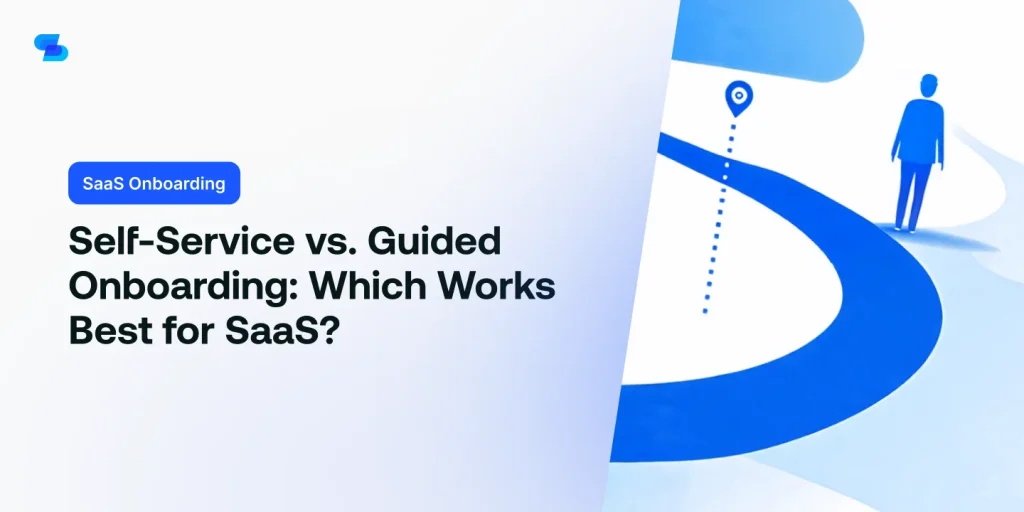As you weigh the pros and cons of self-service vs. guided onboarding for your SaaS company, you’re likely wondering which approach will best set your customers up for success. On one hand, self-service onboarding can be a cost-effective way to empower users to learn at their own pace. On the other hand, guided onboarding provides personalized assistance, which can be essential for users struggling with complex systems. But which path will lead to higher adoption rates and customer satisfaction? The answer lies in understanding the unique needs of your users and finding a balance that works for your business – and that’s exactly what we’ll explore next.
Understanding Self-Service Onboarding
When implementing self-service onboarding, you’re fundamentally putting the reins in your customers’ hands, allowing them to navigate the process at their own pace and discretion. This approach assumes your customers are motivated and capable of learning your product independently. You provide them with the necessary resources, such as tutorials, guides, and FAQs, and let them take the wheel.
Self-service onboarding is ideal for customers who value autonomy and prefer to learn through trial and error.
To make self-service onboarding effective, you need to guarantee your resources are thorough, easy to understand, and readily available. This includes creating clear and concise documentation, engaging tutorials, and an intuitive interface that guides customers through the process.
Additionally, you should provide multiple channels for customers to access support, such as knowledge bases, forums, and email support. By doing so, you empower customers to take ownership of their onboarding experience, reducing the need for human intervention and minimizing support requests.
The Case for Guided Onboarding
Guided onboarding steps fill the gaps where self-service onboarding falls short, providing personalized support and human touchpoints to ensure customers successfully integrate your SaaS into their workflow.
You’re able to tailor the onboarding experience to each customer’s unique needs, addressing specific pain points and concerns. This approach is particularly effective for complex or high-touch SaaS products that require a deeper understanding of customer goals and objectives.
With guided onboarding, you can assign a dedicated onboarding specialist to work closely with customers, offering one-on-one support and guidance throughout the onboarding process. This not only confirms a smoother transition but also fosters a sense of trust and accountability.
You’ll be able to identify and address potential roadblocks early on, reducing the likelihood of customer churn and increasing long-term retention. By investing in guided onboarding, you’re investing in the long-term success of your customers – and ultimately, the success of your SaaS business.
Key Factors in Onboarding Success
To guarantee your onboarding process yields long-term customers, you must pinpoint and perfect the key factors that drive success.
One essential element is establishing a clear understanding of your customer’s goals and expectations. This can be achieved by conducting surveys, gathering feedback, or even hosting onboarding sessions. By doing so, you’ll be able to tailor your onboarding process to meet their specific needs, increasing the chances of successful adoption.
Another critical factor is providing contextual and timely guidance. Break down the onboarding process into manageable, bite-sized chunks, and offer targeted support resources, such as tutorials or tooltips, at each stage. This will help reduce friction and confusion, allowing customers to quickly grasp the value of your product.
Lastly, don’t underestimate the importance of setting milestones and celebrating customer achievements. This encourages engagement, motivates users to continue exploring your product, and fosters a sense of accomplishment.
Measuring Onboarding Effectiveness
By tracking the right metrics, you can pinpoint areas of your onboarding process that need improvement, ensuring you’re delivering a seamless experience that sets customers up for long-term success.
To measure onboarding effectiveness, you’ll want to focus on key performance indicators (KPIs) such as time-to-value, adoption rates, and customer satisfaction. Time-to-value measures how quickly customers achieve their desired outcome, while adoption rates indicate how widely your product is being used. Customer satisfaction, often gauged through surveys or feedback forms, provides insight into the overall onboarding experience.
You should also track metrics like churn rate, retention rate, and customer lifetime value to understand the long-term impact of your onboarding process.
By monitoring these KPIs, you’ll be able to identify bottlenecks, optimize your onboarding flow, and make data-driven decisions to improve the overall customer experience.
This will ultimately lead to increased customer loyalty, retention, and revenue growth.
Finding the Right Balance
You’re tasked with striking a delicate balance between giving customers the autonomy they crave and providing the guidance they need to succeed with your SaaS product. This balance is vital, as too much guidance can be overwhelming, while too little can lead to frustration.
To get it right, consider your customers’ varying needs and learning styles. Offer optional guided tours or interactive tutorials for those who need a helping hand, while also providing clear, concise documentation and resources for those who prefer self-directed learning.
As you design your onboarding process, ask yourself: What’re the essential features and benefits that customers need to understand to get started? What’re the common pain points or areas of confusion?
By pinpointing these key areas, you can develop targeted guidance that addresses specific needs, rather than overwhelming customers with too much information.
To Wrap Up
As you weigh the pros and cons of self-service and guided onboarding, remember that each approach has its strengths.
By understanding your customers’ needs and product complexity, you can strike a balance between autonomy and personalized support.
By doing so, you’ll create an onboarding experience that’s tailored to their unique requirements, driving successful adoption and long-term loyalty.
Ultimately, the key to success lies in finding a harmonious blend of both strategies, ensuring a seamless shift from trial to lifetime customer.

